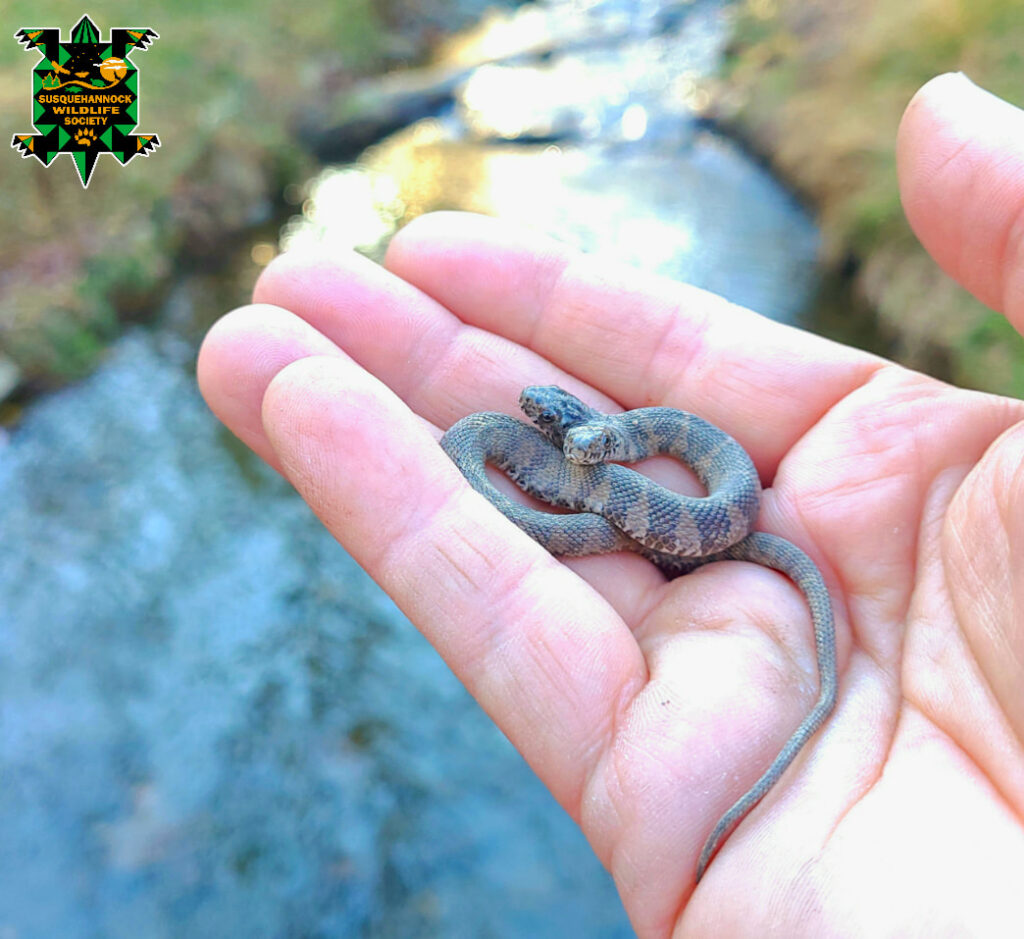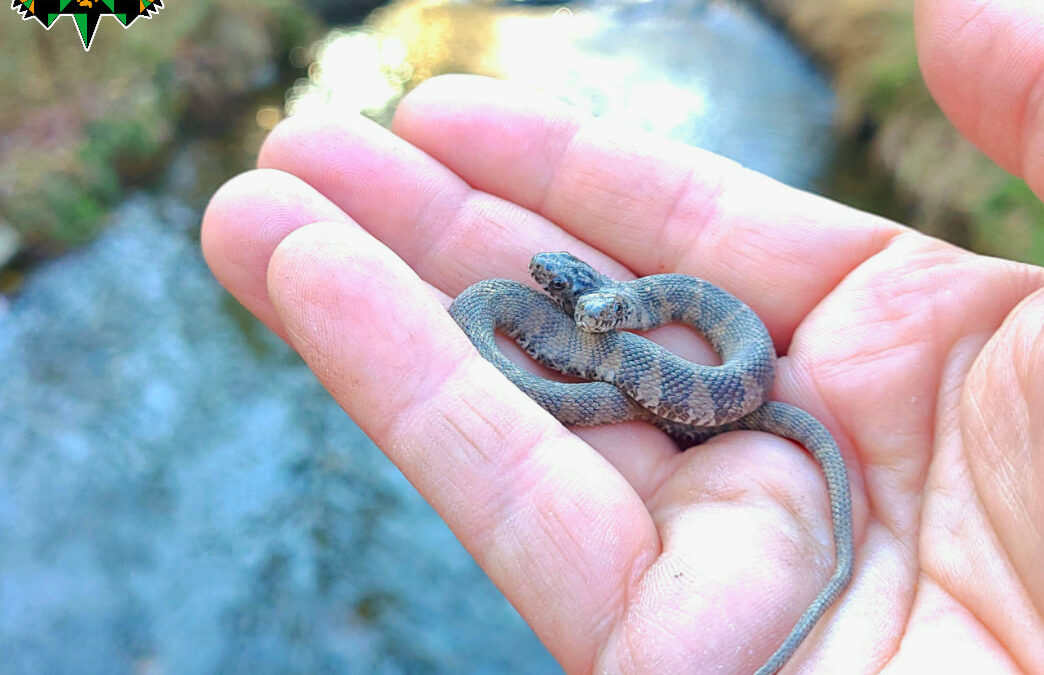Have you ever seen a two-headed snake before? We hadn’t either until just recently when this incredible little Common Water Snake (also known as Northern Water Snake) with two heads and one shared body came into our care. Found by the DiPietro family in the coastal plain of Cecil County, their friend, Chris Starling, a local naturalist, suggested they reach out to us to give it a home as an educational ambassador due to the extremely low chance of survival in the wild.
We gladly accepted the offer and have so far been able to get it to eat some small fish and crickets, a good sign that it can function at least somewhat normally despite its difficulty moving. We have observed its movements and with such an awkward and heavy front section it would have made it particularly susceptible to predators and a challenge obtaining food in the wild. This condition is called bicephaly and happens the same way conjoined twins are formed, one embryo that has begun to split into identical twins stops before fully dividing, leaving just a remnant of that developmental stage which in this case left the snake(s) with two separate and relatively functional heads and one shared body that we assume has only one set of all necessary organs.
While this is certainly a rare find, it’s not unheard of, with bicephaly occuring in many different species at a rate of approximately one in 100,000 live snake births in the wild. This species and about half of our native snakes including the venomous ones give live birth, while the others like the Eastern Rat Snake lay eggs. Water Snakes themselves often get a bad reputation due to their defensive behavior that many times results in a bite and a foul odor from musking when handled rather than some of the other escape tactics used by other species. While it’s not pleasant to be bitten or musked on, these are harmless and important members of our ecosystem.
Due to their banded markings, shape and usual proximity to water and highly aquatic nature, they are one of the most commonly mistaken species for our native venomous Copperhead or the Cottonmouth Water Moccasin which is not found in Maryland or further north. As with all of our snakes, they are protected by law from being killed and best to left alone to do their part in the food web. Our fingers are crossed that this little one survives long enough that it might be able to help us educate many wildlife enthusiasts and future conservationists about its kind.



